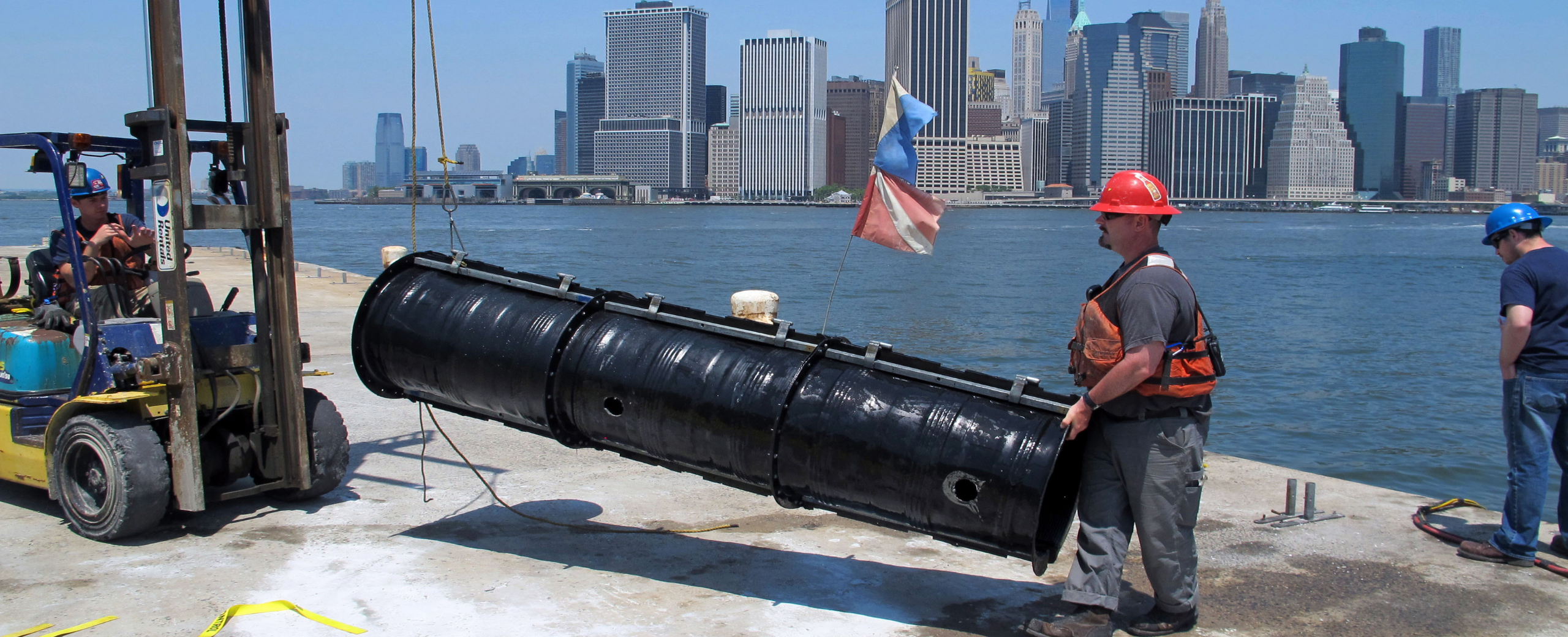Building green
Williamsburg is a densely populated patch of Brooklyn, sitting just 13 inches above sea level with over 150,000 people living in 2 square miles. If you look at the shoreline, a pattern seems to be emerging: industrial waterfront space is being transformed into green space. One waterfront industrial site perched on the East River has been scoped out for redevelopment and rezoned from industrial to residential. The industrial plots are the planned home of the River Ring project, a two-building high-rise complex.
The River Ring project is an example of reconciliation ecology, the act of restoring and preserving nature in human-dominated spaces. With many urban centers adopting ambitious climate resiliency goals, more nature-inclusive general plans, and directing funding towards these efforts, effective ways of building with nature are in need.
The developers of this complex are building for a new era: meeting the threat of rising sea levels as well as community demands for green space and housing equity. A “new approach to urban resiliency”, River Ring serves a trio of needs: structural, social, and environmental. It protects properties from floods, reuses wastewater, and restores urban marine habitats. Not only was the park designed to rebuild green space, but also to make the area more livable for the local community: the project includes a new YMCA, designated affordable homes, and direct input from the community regarding the design of the park.
Reconciliation ecology in urban waterfronts
On land, examples of urban construction and development to recreate natural habitats are everywhere. Urban farms, green walls, parks and pocket gardens have all shown important progress in bringing the environment, and it’s important economic and climate-change protection impacts, into our cities. In the River Ring Project, for example, park space and an urban farm are supplemented by marsh plantings.
Along our developed waterfronts, however, coastal infrastructure, over 70% of which is built with Portland-cement-based concrete, replaces natural habitats with structures that are hostile to marine organisms and ecosystems. This systematic replacement and degradation of our coastal ecosystems leaves urban waterfronts more at risk to flooding and wave energy, lowers water quality, and reduces opportunities to explore and enjoy out oceans.
By redesigning the materials and methods used to develop our urban shores, critical concrete infrastructure can become a tool for underwater reconciliation ecology, helping developers and architects meet climate action goals and lower environmental mitigation costs.
Building with nature
Located on the East River in New York with a 1.3 mile waterfront, the Brooklyn Bridge Park used to be a “monofunctional industrial waterfront site” with “ugly warehouses that were leaking… [and] concrete and asphalt that were sinking” in some places. With creativity and community input, the site was revamped into a public park and important urban and marine habitat.
At Pier 4, the Park installed ECOncrete coastal armor in the existing riprap to improve shore stabilization and increase biodiversity. The coastal armor is modelled after natural tidepools, providing shelter for marine life during low tide and breeding habitat for local species. With valuable water retaining features that are absent from typical armored shorelines, building with environmentally sound marine infrastructure provides ecological and structural value to the Park.
At Pier 6, ECOncrete’s concrete jackets encased decaying wooden piles. The jackets allowed species such as oysters and tubeworms to attach to and thrive on the structure, setting the foundation for even more species of conservational value.
Nature’s return on investment
Native plants and animals play an important role in ecosystems: they keep other species’ populations in check and manage vegetative growth, and support balanced biodiversity. When the park chose to use ECOncrete’s technology to retrofit their waterfront infrastructure, they saw the return of the native Blue Crab, including breeding pairs on the habitat created by the jackets.
At the Pier 4 tidepools, 89-100% of the coastal armors’ surface was covered in life, like algae, amphipods, isopods, oysters, and tubeworms. When species like these return to our waterfronts, they not only revive underwater ecosystems ( with effects like improving water quality by up to 16X), but also strengthen infrastructure with an added layer of calcium-carbonate based armor. These benefits pay back in spades: improving local water quality, creating opportunities for citizen science and educational programs, and creating waterfronts more resilient to climate change.
As calcitic organisms grow on concrete, they absorb and store carbon dioxide in their skeletons. Coralline algae grows in branch-like bunches on pile jackets, and along with the other calcitic organisms, like clams and barnacles, generates an active carbon sink, storing 300 grams of CO₂ per square meter. The sea sponges, mussels, and oysters growing on the armor are also actively filtering water; 1 square meter of ECOncrete can support the filtration of 96.2 olympic swimming pools worth of seawater every year.
With over 5 million visitors in the summer of 2019, Brooklyn Bridge Park is living proof of the impacts of living infrastructure. By building with nature, developers, engineers, and architects don’t have to choose between building effectively, and building sustainably.
